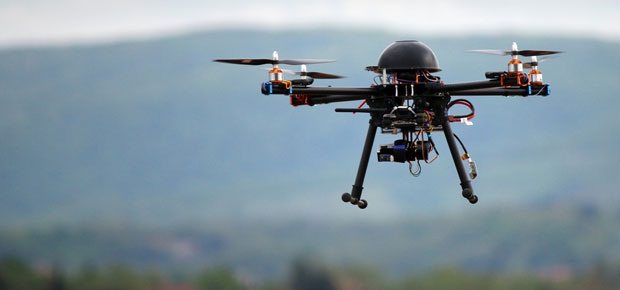In recent years, unmanned aircraft systems or UAS have gone from being primarily used by the military and government to a technology that is in the hands of everyone from farmers to filmmakers. New advancements in the technology are being made every day by government and civilians alike. UAS are being used to plot maps, measure crop growth, and turn everyday video enthusiasts into pros.
In Arizona, the expanding UAS industry is a great benefit to our economy, but with rapid growth, comes growing pains. Striking a balance between civilian and government use of unmanned technology has been one of the biggest challenges in drafting UAS policy. Regulators must determine what the best course is for airspace safety, personal privacy, and national security with a surge in demand for UAS development and use.
On October 31, 2016, the Federal Aviation Administration (FAA) began accepting applications from Part 107 commercial drone operators who want to fly in Class C Airspace. An example of a Class C Airspace in Arizona would be the airspace of Davis Monthan Air Force Base or Tucson International Airport. Part 107 allows for some expanded operations based on technology mitigations if the pilot can make a safety case for obtaining a waiver. This new rule gives drone operators the ability to apply for waivers to operate at night, beyond line of sight, above 400 feet and other specific types of operation.

It is important to remember that property owners don’t own the airspace, the FAA does. This new waiver makes it possible for drone operators to now fly from surface to 4000 feet. With drone operators having the ability to obtain a Part 107 Airspace Authorization, and little case law, this will be something for property owners to be aware of.
The members at Aerospace Arizona remain cautiously optimistic. We are in uncharted territory here and need to pay close attention to what our lawmakers and regulators are doing. Reviewing legislation and meeting with elected officials have become the norm. Last session, the Arizona State Legislature introduced several bills aimed at unmanned aircraft and we expect more to be on the table this session.
In November 2016, Arizona hosted its first UAS Summit. It was the first time Arizona business and government leaders from across the state came together to discuss trends and new advances in the industry. Participants included representatives from Arizona’s 1,200 aerospace companies, state and federal regulators, and individuals looking to break into a surging industry. The UAS and aerospace sector is important to the economy of our state. But while new advancements in the technology are bringing economic growth, it is imperative that we pay close attention to what our lawmakers and regulators are doing.

Mignonne Hollis, executive director of the Arizona Regional Economic Development Foundation and Aerospace Arizona, a non-profit association representing members and informing them on legislative, regulatory, safety and technical issues. It also educates federal, state, county and local elected officials and their staff, as well as other key stakeholders, on the importance and necessity of policies that facilitate a thriving aerospace industry in Arizona. For more information: www.aerospacearizona.org.




